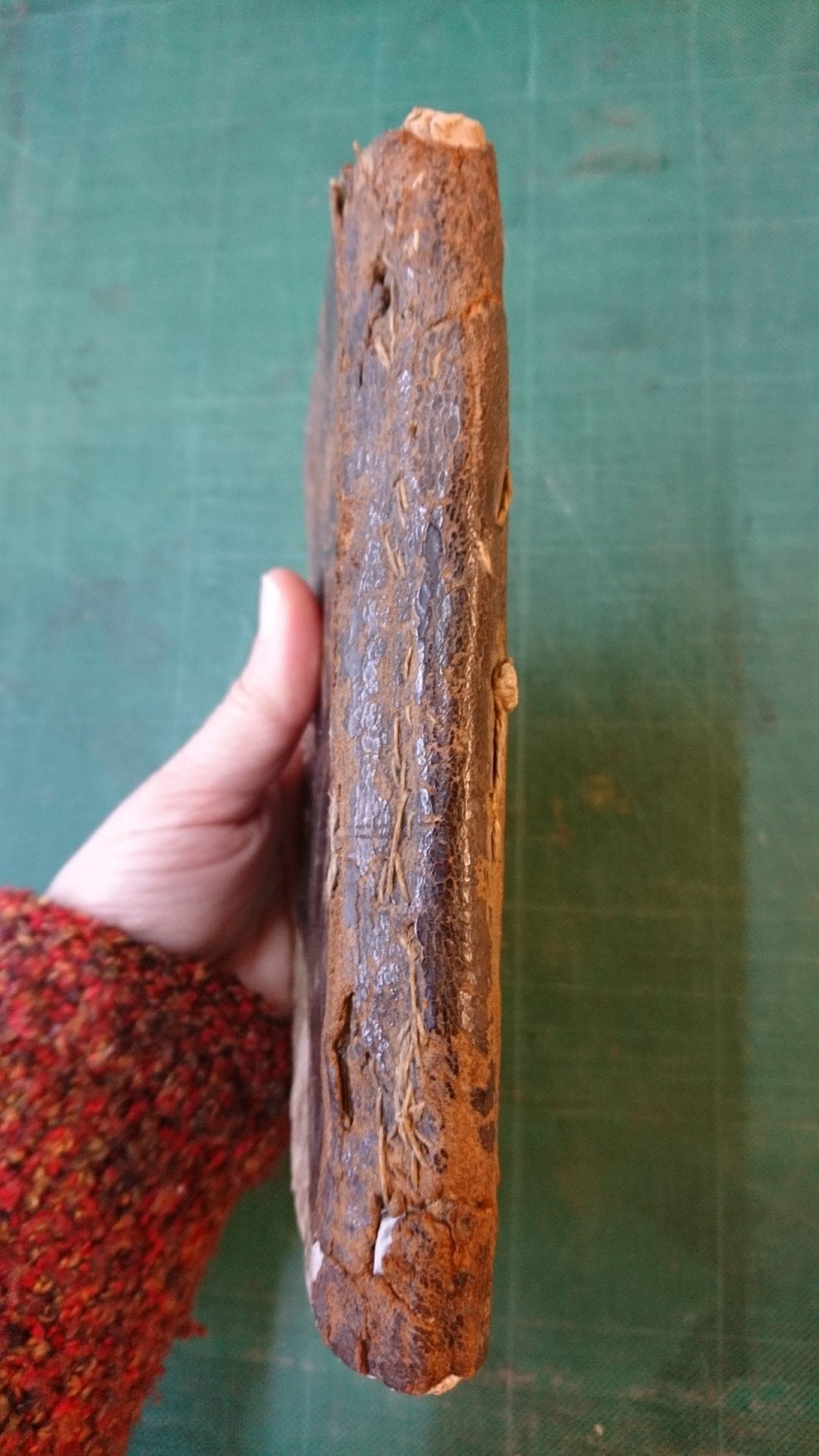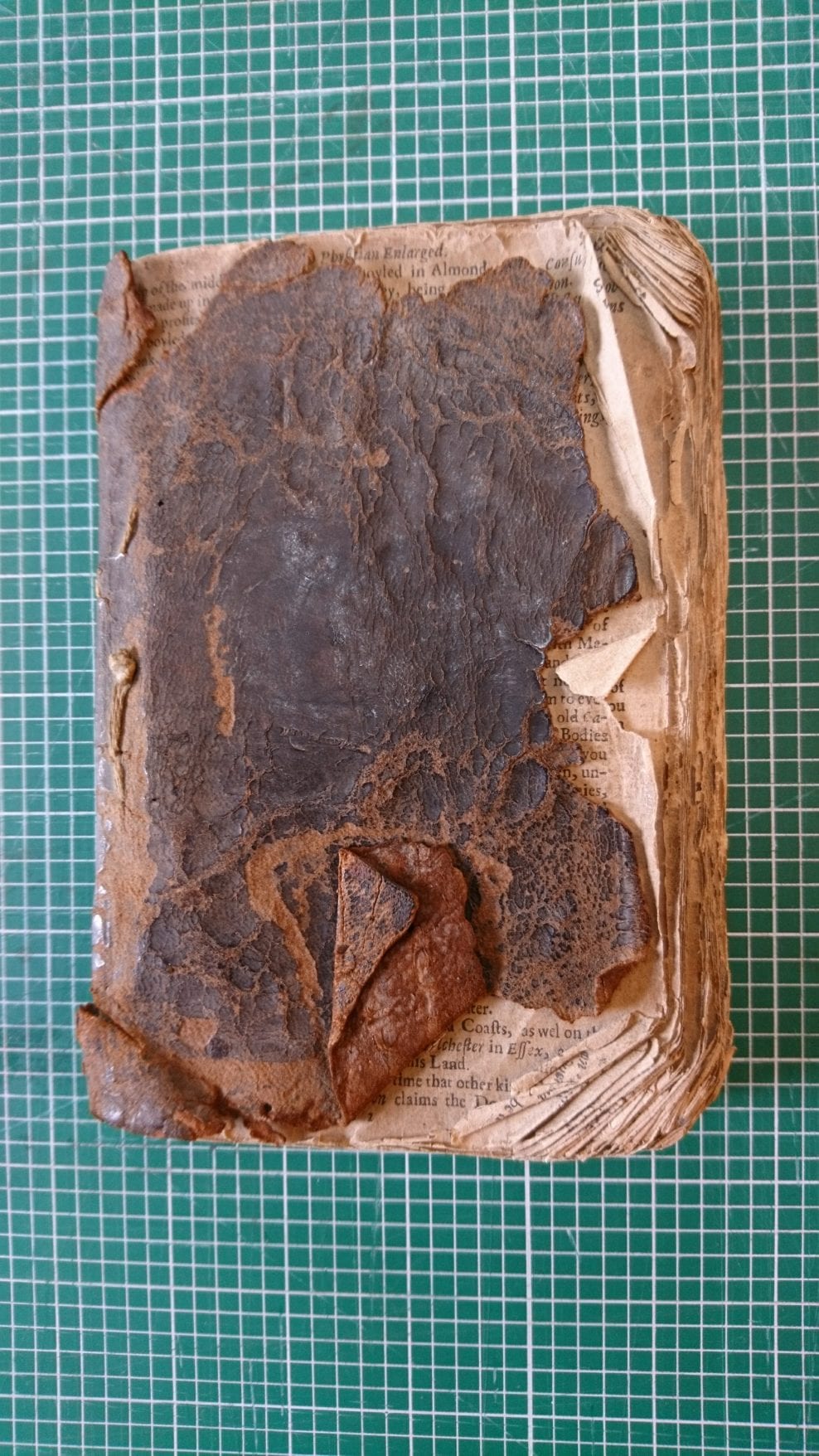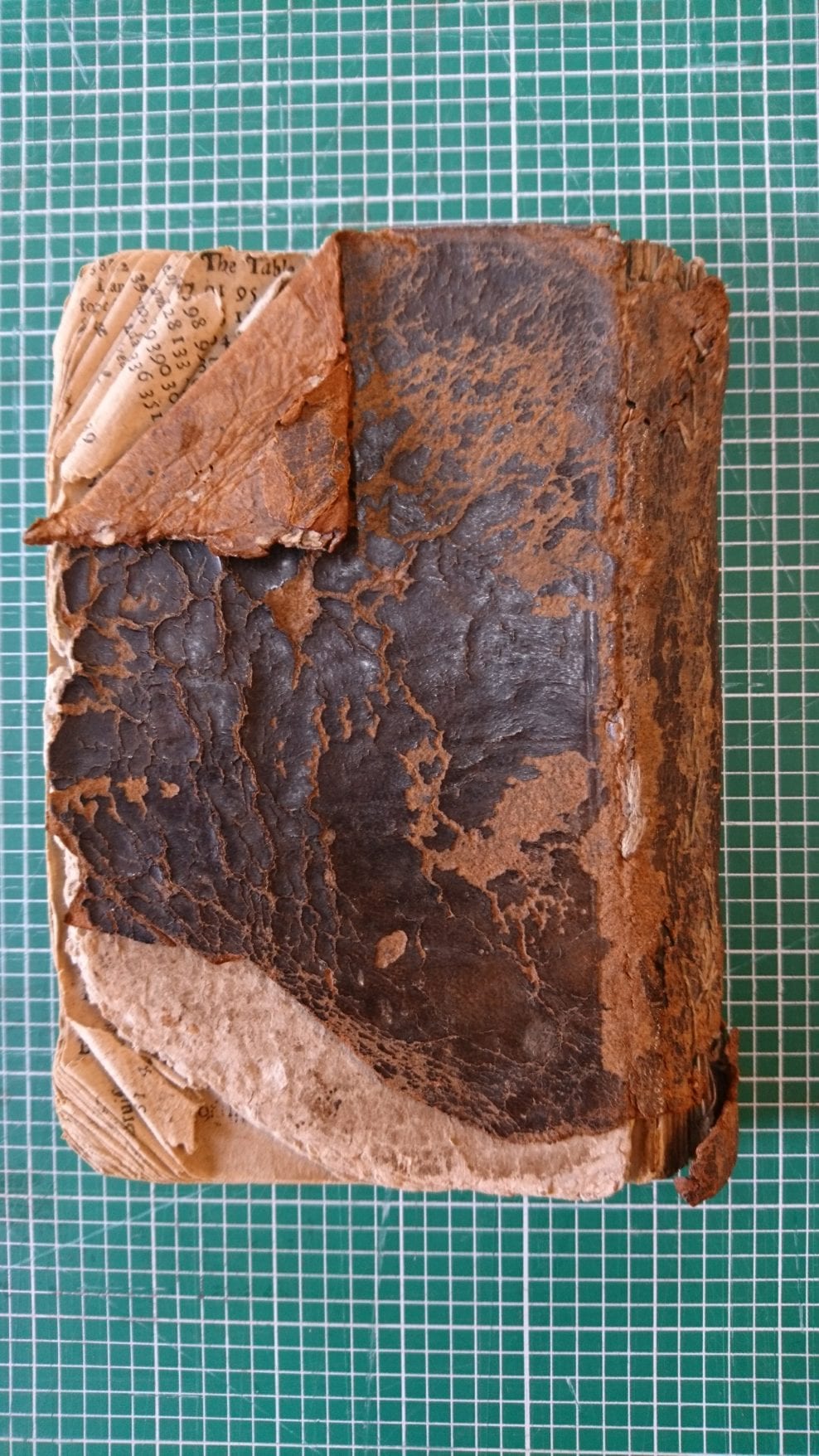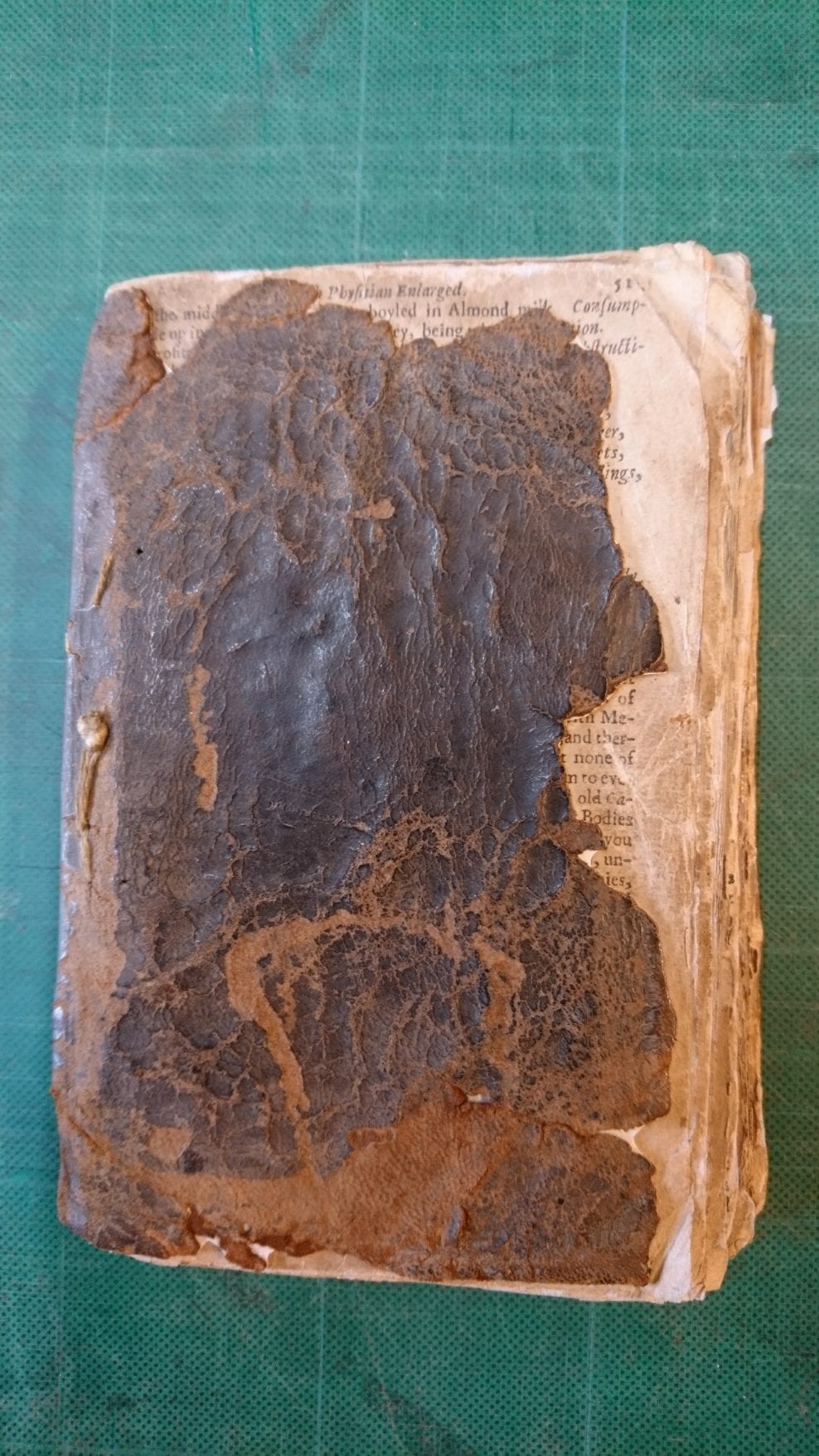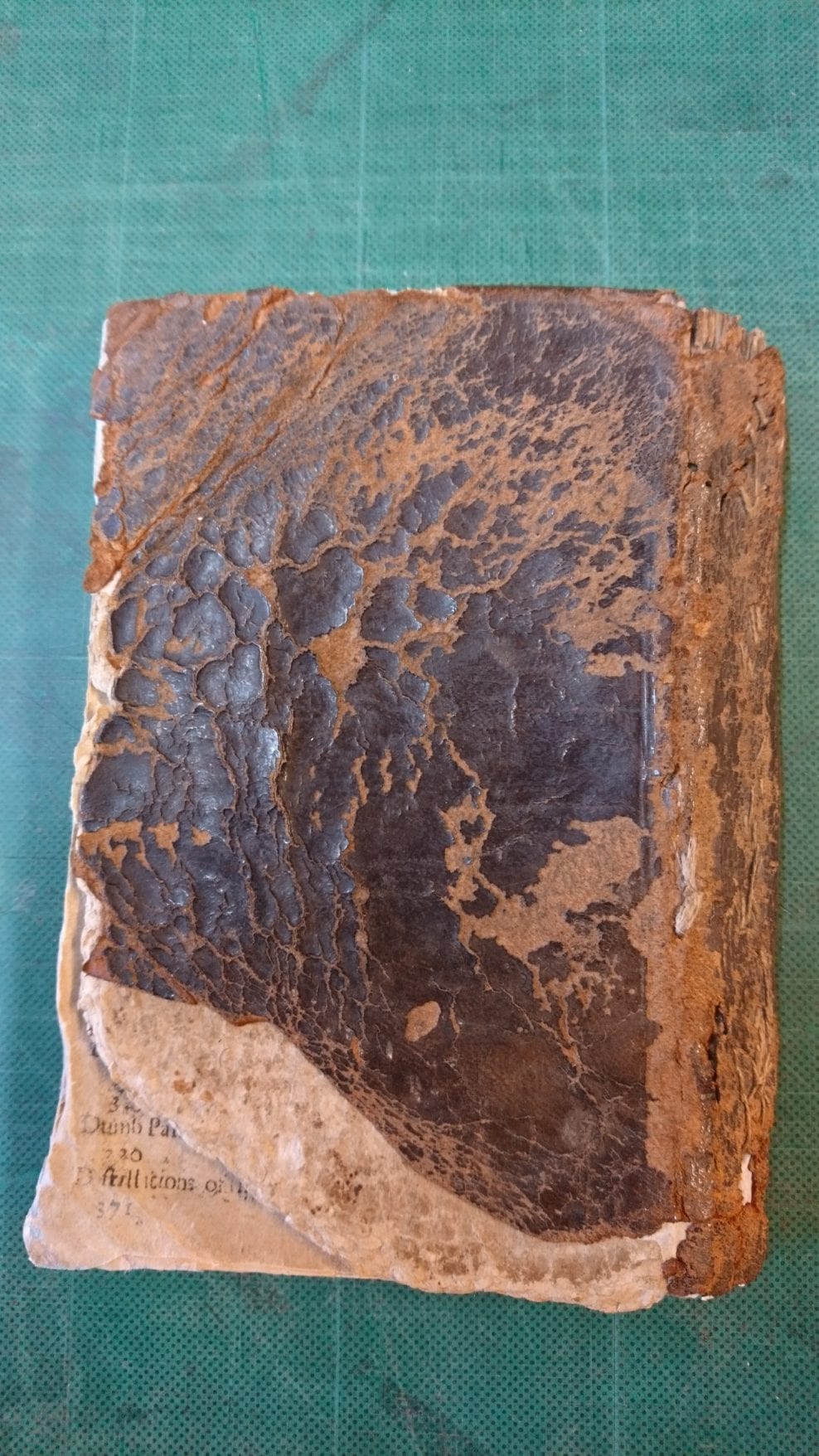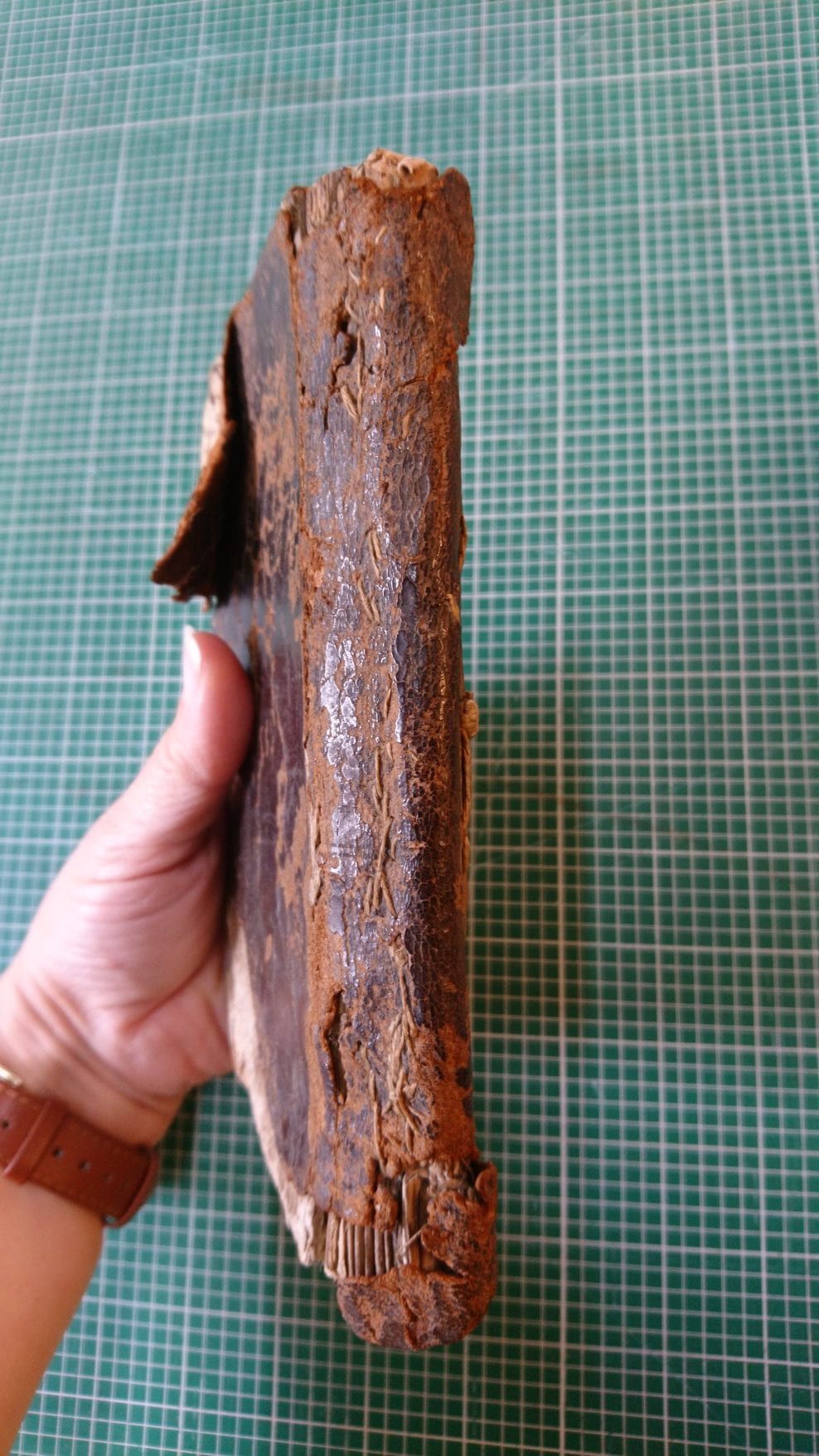Projects
‘The English Physitian’ – Culpepper 1665
This reference volume had suffered damage from very heavy use. Although damaged the binding was found to be the original which posed ethical considerations for treatment.
Pre-Treatment Condition: This lovely volume was a full calf leather binding. The surface of the leather had become very creased and delaminated in places. The front board was lost but the original leather (less the turn-ins) remained. Much of the back board was intact although both corners had large losses; the laced in attachment remained firm via the original leather thongs. The back board appeared to be cotton based and although the edges were soft and delaminating slightly the board remained stable and strong. An area at the head of the back board had retained its board edge and leather turn-in. The leather covering had many losses at all the edges due to general wear and tear, and rodent damage. There was a large flap of leather folded back on itself at the tail of the front cover, and the same at the head of the back cover. The leather at the head and tail of the spine was torn, loose and vulnerable.
Two different weights of crude sewing could be seen at the leather spine. A heavier weight of thread had been used to re-attach the front and back cover leather to the textblock; a finer thread had been used within the textblock to attach the sections to each other. The thread was cotton or linen and remained strong with the repairs intact and functional.
The textblock was cotton rag paper in good strong condition. The title page and possibly all of the first section were lost, the sewing threads left gaping. Some of the leaves at the back of the textblock had also been removed. The paper substrates had worn in surface dirt and were slightly shiny at the foredges from very heavy use. All the page corners were creased and folded. There was a tear at the foredge of the first page, many tiny tears at the page foredges and losses in the gutters at the last two pages (due to rodent damage).
Treatment Recommendations: As there was a great deal of historical information present within this volume, I recommended its appearance should remain much as it was pre-treatment. I advised against the leather losses being infilled or the cover being replaced, instead I recommended small repairs using Caecum at the back of the leather to re-attach the loose areas back to the main body of the covering, thus preventing future loss or damage during handling and use. Only a little paper repair was necessary, in the main I recommended the curled page corners be relaxed and flattened to allow safe consultation of the text.
The main aim of this work was to preserve all the historical information present within the volume while allowing continued access, consultation and enjoyment of the text and object as a whole.
Treatments: Local applications of cold water were applied to the page corners which were then immediately pressed and dried flat between acid free blotters. The page corners were supported and repaired only where necessary with archival tissue adhered with a reversible adhesive. The loose flaps and folds of leather were locally humidified and relaxed with cold water vapour. These were then pressed flat between acid free blotters. The loose areas of leather were supported at the back with Caecum adhered with a gelatine mousse.
